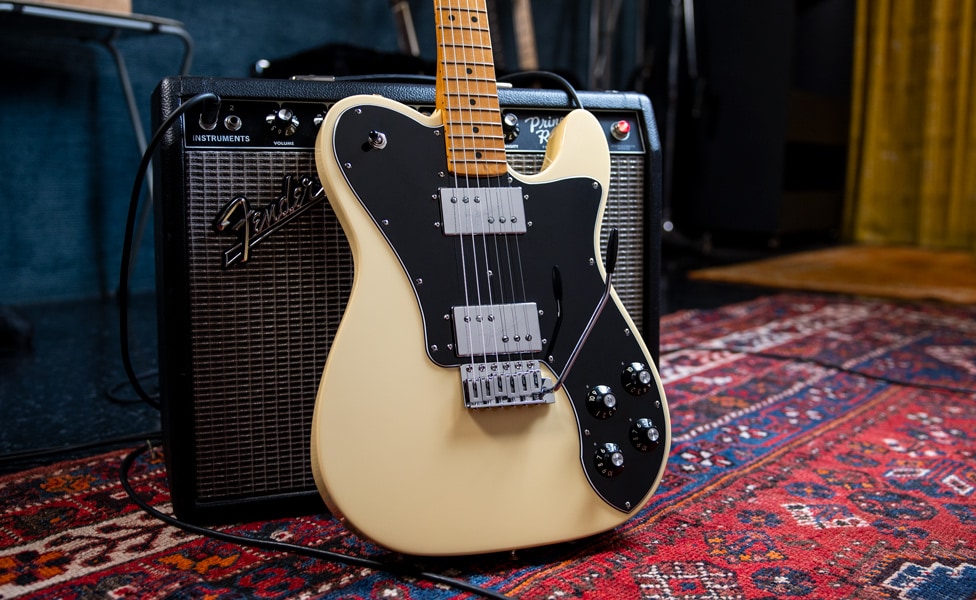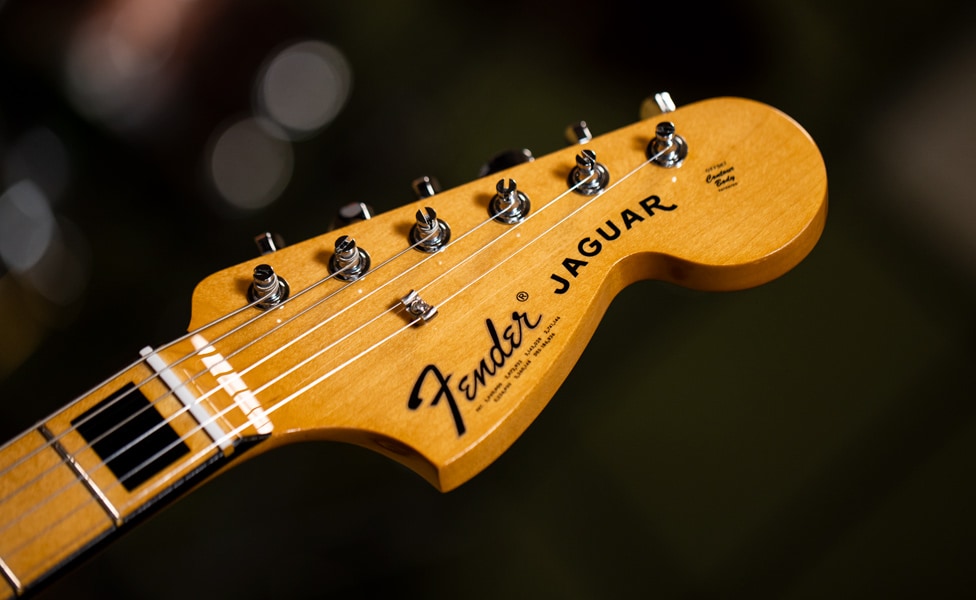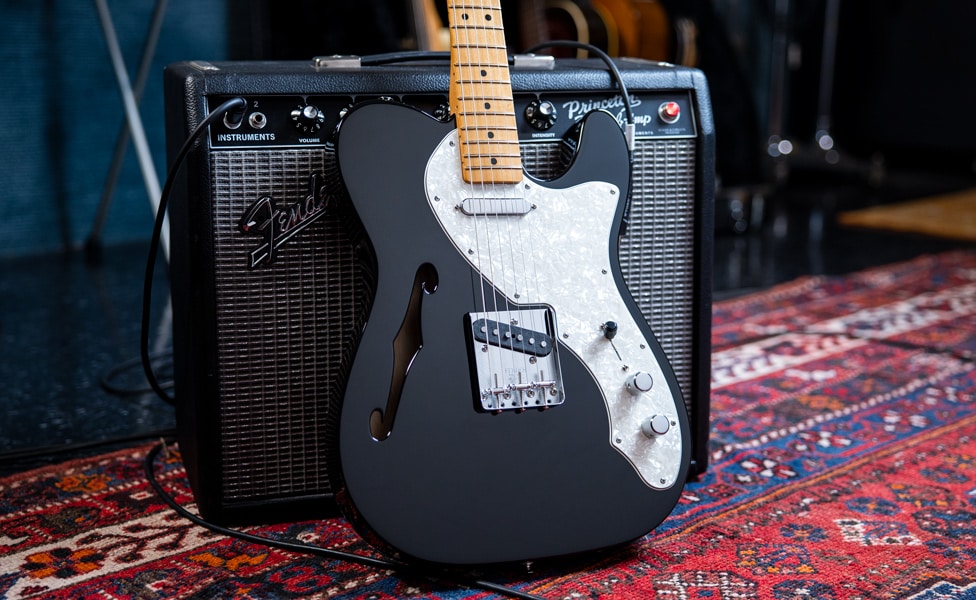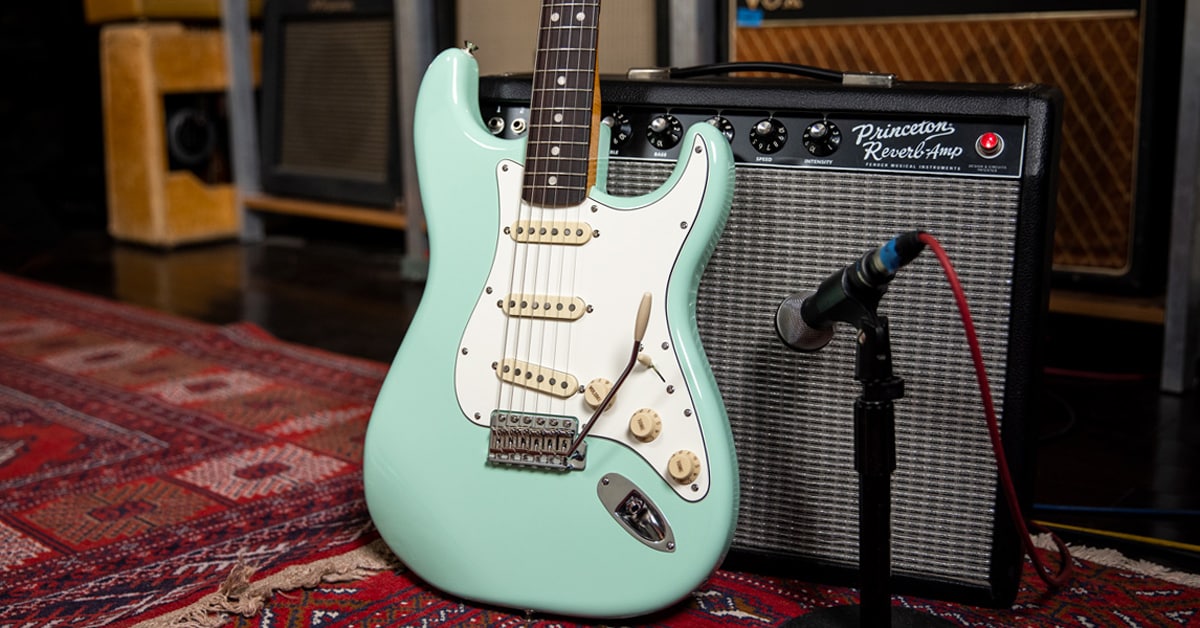The Fender Vintera I series launched in 2019 with 17 vintage-inspired, legendary instruments, each representing a groundbreaking decade—’50s, ’60s or ’70s— in the company’s then-73-year history. The brand-new Vintera II line also follows the same “best of the decades” approach, but debuts some stunners (’50s Nocaster®, ’60s Bass VI), spotlights basses this time (’70s Telecaster® Bass, ’70s Mustang® Bass, Precision and Jazz models from the ’50s and ’60s) and changes up some features or decade/model pairings for the updated series’ Stratocaster®, Telecaster, Jazzmaster®, Jaguar® and Mustang guitars.
Vintera II instruments are excellent touchstones for guitarists who may start out with Fender’s Player and Player Plus series, and want to go deeper into the mojo of the brand’s early days, innovations and evolution, but who aren’t yet ready to move up to the recently released American Vintage II line (which accurately celebrates models from a specific time, such as a 1961 Stratocaster and 1951 Telecaster). Another of Fender’s “decades” concepts is the JV Modified line, which pays homage to 1980s “Japanese vintage” reissues that emulated ’50s and ’60s Stratocaster and Telecaster guitars.
With so much company history, specs, user feedback, artist preferences and progressions in technique and musical styles, it can be daunting to create Fender production-model instruments that accurately represent an era’s feel and sound—especially without getting too close to Fender Custom Shop-level pricing. Giving us an exclusive “reveal” of the thought processes and production strategies for Vintera II is Max Gutnik, senior vice president of products at Fender. Get ready to journey through time and back to the present again …
What was the basic strategy for “the best of the decades” theme of the Vintera II line?
Max Gutnik: The Vintera II series is about capturing the spirit of a particular decade. What was Fender trying to do at the time? What was the essence of the original recipe? Also, we had certain things we were trying to accomplish to make them affordable and accessible to a lot of people, as well as wanting them to be high-quality instruments that live for decades to come. Then, we had to take into consideration how today’s players use our guitars. Here’s an example—it may be historically accurate for a particular Stratocaster to have a 3-way switch, but that’s not what the customer is going to want. Today, players want a 5-way switch. Some things have evolved for a reason over the years, and I think it’s fair to address those elements on a vintage-inspired series such as the Vintera II.
The thing that jumps out the most about the Vintera II series is that there are different models offered than what was available in Vintera I. It's not like you took the same models and said, “Okay, we'll do the best Vintera instruments since the last Vintera line.” How and why did you approach the series differently this time?
When people are checking out Vintera guitars and basses, they can be fans of our vintage instruments or people who are new to the space. So, we added models like the ’50s Nocaster and the ’70s Telecaster Deluxe with the tremolo, but we also looked at neck shapes, pickups, finishes and stuff like that to give Vintera II a fresh appeal. You obviously want to make sure you're taking care of what people want—such as a blonde Tele®, a sunburst Strat® and that sort of thing. But, a lot of times, it’s like, “What haven’t we done in a while, or what do we think is really cool?” You get to expand the portfolio without necessarily doing things by the numbers. You can explore the romance of it a little bit—which is fun. It has been interesting to tell a wider story of the heritage and backdrop of what has made Fender so cool over the decades.

The Vintera II line includes the first Fender-branded Bass VI in standard production in a very, very long time. What drove your team to get back to manufacturing it?
Well, The Beatles: Get Back documentary influenced everybody, and it was such a great moment for the Bass VI. It hadn’t been reissued by Fender in decades, but it now seemed like a really good time to do it, and we think there’s a good chance it could be the runaway favorite of the whole Vintera II series. The Bass VI is one of those unique instruments that makes Fender what it is, and it’s nice to have it back and celebrate it. The timing with the Beatles documentary was really fortuitous.
I’m sure there are people who aren't sure what the heck a Bass VI is. It has bass in the name, but it’s not a bass. It has six strings. It's often played by guitarists, but it's not a baritone. What is it?
I think a Bass VI is more of a bass than a guitar, but it’s a hybrid that lives in both worlds. It has its own space for guitar players and for bass players. It's certainly not a Precision Bass® or a Jaguar. It finds its own thing that becomes unique. If you’re trying to replicate a track that had a Bass VI on it, you can’t. It’s really hard to get that sound with anything else.
What are some of the basic differences a player can expect when moving from decade to decade for, say, a Stratocaster or a Telecaster?
The models from each decade have different recipes for their pickups to represent their specific eras. So, you can trace the sounds of the ’50s instruments to the tones of the ’60s and ’70s. Then, the ’50s models have thicker necks, there are rosewood fingerboards on the ’70s instruments, and different colors and other aesthetics from each decade. If you’re in a position while shopping in a store where you could play the models side by side, you’d get a very cool narrative of the depth and breadth of those eras.
I mean, I feel the ’50s and the ’70s was the golden era of tone. There was so much sonic evolution from ’50s Buddy Holly and rockabilly styles all the way through to the psychedelic and hard rock eras. The artists who played Fender guitars in those eras are a cool backdrop to the new Vintera II ’50s, ’60s and ’70s models—especially as those sounds likely harken back to some of your favorite music. You know, “I remember so-and-so playing this kind of guitar with this pickup configuration influencing this kind of music.” Now, we don't necessarily design any of the Vintera II guitars specifically to an artist—we obviously save those for signature model celebrations—but there's always a tie-in to what was happening culturally during those times.
How did you determine precisely which elements should go into a production model that represents a 10-year timespan? I’m sure the specs within models evolved and changed over a decade, and this is also not the Fender Custom Shop crafting an exact replica of a 1954 Stratocaster.
You’re right. Vintera II is not about replicating a certain model at a specific year. Attempting an authentic replication of an entire line of guitars is near impossible, because even if you found a rack of 1954 Stratocasters at a vintage shop, each one is going to sound vastly different. Furthermore, some will play amazing and some won’t. So, we had to make informed choices—especially as manufacturing in the ’50s, ’60s, ’70s and even the ’80s was much less consistent than it is today. For example, back then, you could have a neck profile specified at a 7.25" radius, but depending upon who sanded the thing that day, the radius could be off by a half inch.
Good point. It was the same with parts, I’m sure. Leo Fender might have used a certain capacitor for three weeks, and then he’d get a better deal from, say, a military surplus company, and he’d use those for a while.
There are so many stories like that. For example, ash bodies came about because a furniture company was getting rid of a bunch of wood, and Leo was like, “Hey, man, that sounds good,” and he turns it into a tonewood. You know what I mean? There are so many opportunistic things—or absolute happenstance—in the history of Fender. I believe that stuff adds to the character and mystique of the brand, so we take it in and celebrate it, but these days, we also need consistency in how the guitars and basses will play and sound.
Where do you feel the Vintera II series sits in the overall Fender universe?
If you're coming to Fender for the first time, you’ll probably end up starting with a Player model—which has a great set of very modern-sounding pickups. But once you've learned a little bit more about Fender instruments, and you start thinking about the sounds you want, and the style of music you play, Vintera II ignites more inspiration—especially given the wide variety of tonal options the series brings. If you're chasing a certain sound, I think you might look at Vintera II for that.
Vintera II might also be the thing if you're nostalgic about the aesthetic, or just love the look of old vintage guitars. But again, the cool part about a Vintera II is you don't have to only play a particular style. These instruments are going to translate to all sorts of things because they're still modern guitars. So, it really is about where you are in your playing journey—in terms of budget, in terms of sound and so on.

In terms of options, it’s an embarrassment of riches—which is why we see people choosing multiple guitars. There’s someone who bought a Player, for example, and they keep that guitar because they love it. Then, perhaps they saw the Beatles documentary and they buy a Vintera II ’60s Bass VI. Or, they know who Hendrix is, and they want a Vintera II ’70s Stratocaster. The Vintera II series is a great platform for folks who want to experiment with it, grow with it and do their own thing with it.
On that point of “doing your own thing,” do you feel there’s a parallel development where the instrument influences the artist and the artist influences the instrument?
I think one does influence the other. As we’ve seen with so many historical amps and guitars, the musicians are the ones who ultimately tell the story by how they use them. In fact, that was the narrative backdrop for Vintera II—these instruments are being celebrated because of the people that played them over the years. There was certainly a synergistic relationship that evolved between amps and guitars. Certainly, at Fender, we’ve followed that story, because we're on both sides of it in a way that many companies aren't. The Fender Bassman® changed the game when it came out, and the guitar pickups drove a lot of the breakup. Players looked for the right guitar to get the tubes cooking and get that overdriven tone. As it evolved, the amp started doing some of the saturation work, and all of a sudden, you could choose lower-gain pickups to get some of the tonal versatility back. Single-coil pickups could do really interesting things with some of the amp stuff that was going on. For example, the bluesy rock that had really cool variances in tone—even within one song. I have to say—it's really fun to take vintage-reissue instruments, plug them into vintage-correct amps and hear the sound. You feel like you're being taken back to the magic.

Was there a particular era that was the most fun to design and produce?
Doing the ’70s stuff was really cool. The CBS era of Fender [1965–1985] gets such a bad rap, but there’s a resurgence of people starting to have a fondness for ’70s Fender stuff. I think Fender guitars from that era had a very unique sound, and those tones had a big influence on music at the time. I mean, Hendrix was playing late ’60s and early ’70s Strat models, so that sound is something we're all familiar with. The look of the guitars was unique, as well—big headstocks and so on. And you know what? A three-bolt neck heel is actually really good if it's done right. The perception that some CBS Fender guitars were not very good, may not have been the fault of the designs—it may have been the execution. So, I was looking forward to seeing what the ’70s models could be with much better manufacturing processes and materials.
What are some of your personal favorites from the line?
I'm a Strat guy, so I love the ’60s Stratocaster. I also love the ’70s Telecaster Deluxe and the ’70s Competition Mustang. Those are my three favorites in the series. Then, the ’60s Bass VI because it’s a Bass VI. The ’50s Nocaster is great, as well. I mean, it’s a Nocaster.
It must have been great to see and play the entire line when everything was finally ready to go.
Absolutely. When you make guitars for a living, the best part is that no matter how many guitars you make, every time that first sample comes in and you open the case, you go, “Oh, wow—look at this.” When we brought all of the Vintera II models to Hollywood—which is where the product team is—and we got to take them out of their cases, smell them, play them and plug them in for the first time, it was magic. The guitars are so dramatically different from instrument to instrument that it’s really fun to play them. But, you know, every time we do something like this with a series of instruments, we all marvel. It never gets old.










